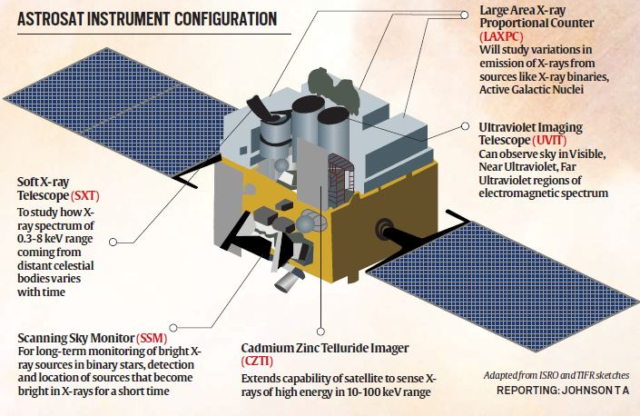PREVIOUS
New Group of Stars
March 13 , 2019
2085 days
848
0
- Researchers from Thiruvananthapuram and Mumbai have identified a new population of ultraviolet stars in the globular cluster NGC 2808 using Indian multi-wavelength space observatory AstroSat.
- Globular clusters are collections of thousands to millions of stars, moving as one unit.

- These stars are tightly held together by gravity of the cluster, and are believed to have formed together at roughly the same time.
- NGC 2808 is one of the most massive globular clusters that we know of, and is located at a distance of 47,000 light years from us.
- This cluster was observed by the team of researchers using the Ultra Violet Imaging Telescope (UVIT) on-board AstroSat.
Astrosat
- Astrosat is India's first multi-wavelength space observatory.
- It was launched on a PSLV-XL on 28 September 2015.
- With the success of this satellite ISRO has proposed to launch AstroSat-2 as a successor for Astrosat when nears its five-year life span.
- This mission has put ISRO in a very exclusive club of nations that have space-based observatories.
- Only the United States, European Space Agency, Japan and Russia have such observatories in space.
Leave a Reply
Your Comment is awaiting moderation.


